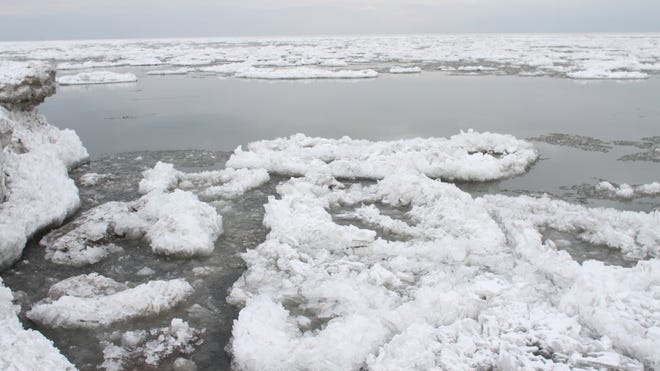(单词翻译:单击)
中英文本
Winter is integral to the culture of the Great Lakes region. Warm mid-February days draw Michiganders outside, but they're uneasy.
冬天是五大湖地区文化不可或缺的一部分。温暖的二月中旬,可以吸引密歇根人来到户外,但他们对此会感到很不自在。
"We like it when it's nice like this, but it's not real winter unless it's, like, minus 40," says Kasey Spencer, a lifelong Upper Peninsula resident. "When it's cold, we're miserable -- but we're also really happy, you know? If we have a really warm winter, it feels like something's wrong."
“我们喜欢这样的好天气,但气温到不了零下40度,就不是真正的冬天,”在上半岛生活了一辈子的凯西·斯宾塞说。“天冷的时候,我们是很痛苦,但同时我们也很快乐。所以如果冬天非常温暖,我们就会感觉不对劲。”

There's more heat in the air, trapped by the greenhouse gases humans continue to pump into the atmosphere. Climate experts forecast air temperatures in the Great Lakes basin to rise by another degree or so by 2045, and roughly six to 10 degrees by 2100. There's also more heat in the water, forced in during long, hot summers.
由于人类不断排放到大气中的温室气体,空气中的热量增加了。气候专家预测,到2045年,五大湖地区的气温将再上升1度左右,到2100年将上升约6至10度。在漫长炎热的夏季,水中也会有更多的热量。
However, some scientists predict that by the end of the 2030s, there will be 15 to 16 fewer days with the minimum temperature below freezing in the Great Lakes basin, and by the 2050s a few more. By the end of the century, depending on the strength and aggressiveness of climate actions taken, 27 to 42 fewer days each year could be below freezing, scientists say.
不过一些科学家预测,到本世纪30年代末,五大湖地区最低气温低于冰点的天数将减少15至16天,到本世纪50年代这一数字还会增加。科学家称,到本世纪末,根据采取的气候行动的力度和力度,每年冰点以下的天数可能会减少27至42天。
重点讲解
1.pump into 注入
A lot of people think it a good idea to reduce the amount of carbon dioxide we pump into the atmosphere.
很多人认为,削减我们排放到大气中的二氧化碳是个好主意。
2.depend on 取决于
Wage rates depend on levels of productivity.
工资水平取决于生产量的多寡。


